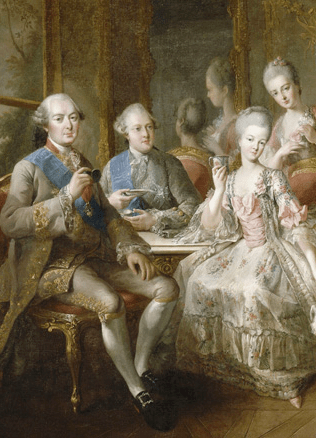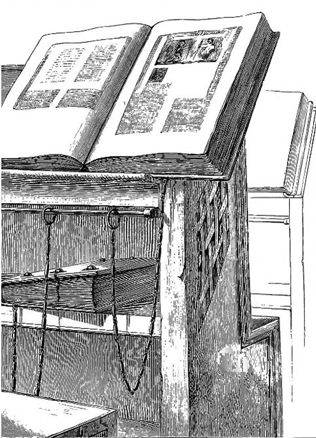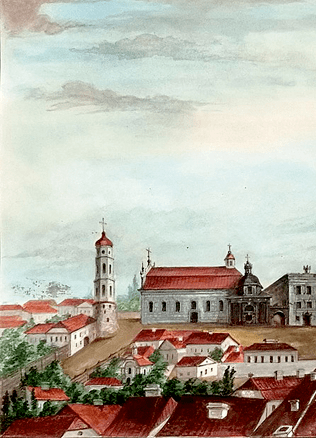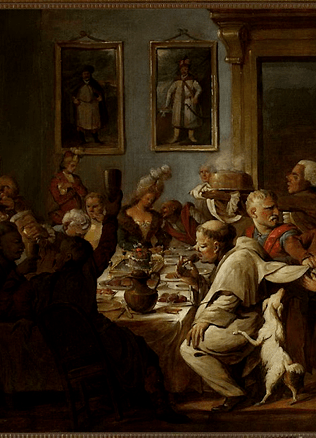Relics of the Bodies of Martyrs dating to the 18th century
Relics of the saints are regarded as part of the ecclesiastical heritage, related to the visual and physical representations of the saints, the ceremony of deposition of holy relics as testified in the written sources as well as to the altar equipment. The relics deposited in reliquaries, just like the holy images, represent various saints. A relic is the holy body, revered as part instead of the whole, and is believed to be the intermediary of Divine Grace. In terms of authenticity and veracity, relics have more value than holy images. Nevertheless, the corporeal self of the relic in question has to be verified through the manifestations of culture such as images, epistles, artful design and decoration, serving as documentation of the relic’s provenance. Relics are regarded as part of the heritage, which is not as eloquent as paintings or books. Consequently, reverence of relics requires more memory and implementation of certain actions, aimed at “retaining” and justifying this type of memory, compared to any other manifestation of pure and genuine culture such as a piece of art or literature. Reliquaries provide a means of protecting and displaying relics. Since the relics themselves were considered “more valuable than precious stones and more to be esteemed than gold,” it was only appropriate that they be enshrined in containers crafted of or covered with appropriate precious material, depending on the historical period. It was namely through the artful decoration and design of the reliquary, its iconography, inscriptions and other types of cultural codes that the relic in question could be identified, attributing it to a certain person and establishing the link between different places and moments in time. A deconstructed body could never exist as a manifestation of religious reality without the culturally appropriate artful decoration, such as visual design or sources of written verification.
Reliquary as spiritual and artistic heritage
With Christianity gaining broader acceptance, different routes were used to take the holy relics to the churches of GDL. Thus, the veneration of Prince Casimir’s remains started at the beginning of the 16th century. In the 17th century, the relics of other Blessed Saints (those of Josaphat Kuntsevych, the Uniate Archbishop of Polotsk, among them) were displayed for public veneration. However, as testified by historical sources, in most instances the relics of catacomb martyrs were brought from Rome (the number of the relics of martyred early Christians brought from Rome was particularly intensive in the 17th century). Many of them perished during the Thirteen Years’ War and other periods of unrest and recurring hardships. Among the surviving relics of the 17th century is the reliquary and the altarpiece of St. Martinian of the Joniškis church, both attesting to the flourishing cult of the holy martyr of Rome.
Within the scattered legacy of ecclesiastical culture of GDL, the monuments displaying relics and testifying on their significance are rarely found. Even rarer is the historical evidence for the cult of holy relics, the original texts recording the circumstances of depositing relics in churches, privileges and graces endowed, as well as the evidence on the display of holy relics in reliquaries, altars and churches.
From the artistic point of view, the reliquary of St. Victor, designed in the form of an altar and currently housed in St. John’s church, formerly possessed by the Franciscan church, is regarded as one of the most valuable.
It was transferred to St. John’s church from the Franciscan church in Vilnius after it had been closed down in 1864. The reliquary consists of a small coffin with the relics of the body of St. Victor (a Christian warrior martyred in the 3rd century in Marseille) and a cross with the crucified figure of Jesus, designed in such a way as to resemble a grapevine growing out of the coffin. This is a symbolic Lignum Crucis, or a Tree of Life, when Christ is depicted crucified on the vine, among the branches of which twelve grape bunches can be discerned. This is actually a reliquary reminding of twelve apostles, symbolizing the Apostles Church as a mystical body of Christ. In between the pillars, on the tabletop of the altar, the mensa, four silver gilded wooden figures of holy martyrs, are placed, with the natural size figures of the warriors St. George and St. Florian, on one side, and the figures of clergymen St. Stephen and St. Lawrence on the other side. Above the pillars, the figures of four evangelists complete the entire composition, with the figure of God the Father crowning the cloud ridges and the rays which cover the central niche.
In the book dedicated to the history of the Franciscan Monastery in Vilnius, written by the Superior of the Monastery Antoni Grzybowski, it is said that the Franciscan church had been destroyed by fire raging in 1737. However, the altar of St. Victor was restored in 1740. The coats of arms, visible at the foot of the altar, give proof that its renovation and installation was sponsored by the Livonian Voivode Jonas Ludwig Platter and Rosalia of the Brzostowski’s, daughter of the Trakai Castellan.
The cult of relics was not stopped by the Age of Enlightenment
Paradoxically enough, most of the surviving historiographical and iconographical material about the bodies of holy martyrs brought over from Rome and the cult of venerating them is dated back to the second half of the 18th century. This was the Age of Enlightenment, during which the cult of relics was criticized and, in many churches, intentionally subdued, at least not brought to the fore. This notwithstanding, the ecclesiastical life of GDL in the second half of the 18th century was characterized by foundations of new churches, reconstruction of old churches as well as an active engagement of monastic clergy and secular nobility in the veneration of relics. The relics of holy bodies (mostly those of martyrs from the Rome catacombs) were brought to GDL and deposited in different places, established as the places of worship. To illustrate the point, in 1765 the Valkininkai Franciscans brought the relics of St. Boniface body. On 29 November 1765, the Bishop of Vilnius Ignacy Jakub Massalski granted permission to publicly display the relics in question for the reverence of the whole congregation. On 28 June 1766, “parts of the holy body were most studiously and with due respect arranged and placed in a certain order into a luxury coffin, the ceremony being personally supervised by the gracious Lady Wiktoria z Potockich Pociejowa, the guardian and patron of the Grand Duchy of Lithuania.”
In 1761, the relics of three Augustinian martyrs from Rome were ceremoniously brought into the Vilnius Cathedral. From 1763 to 1765, the relics of St. Vincent the Martyr were solemnly taken to the Church of the Apostles Saint Peter and Saint Paul in Vilnius. On 19 April 1749, the deposition of the body of martyred St. Feliciano was celebrated in the Vilnius Carmelite church of St. George, whereas the Trinitarian church in Vilnius was enriched with the relics of St. Valentine’s body, who had served as Bishop and died as a martyr. Starting with 1767, there is historical evidence in written sources about the relics of St. Faustus’ whole body in Pažaislis. From the year 1772, there is mention in historical sources of St. Fortunato’s body in the Siena Franciscan church. A publication of 1780 testifies on the presence of St. Theophilus’ body deposited in St. John’s church in Vilnius. In the same year, the founder of the Old Myadzyel church Antoni Koszczyc arranged for the body of St. Justin the martyr to be deposited in the church. The small coffins placed at the foot of the altars aroused piety and curiosity of pilgrims. In short, as late as in the 19th century the tradition of going on pilgrimage round Vilnius with the purpose of visiting the relics of martyrs, deposited in the churches of Vilnius, was still very much alive and in practice.
Tojana Račiūnaitė



